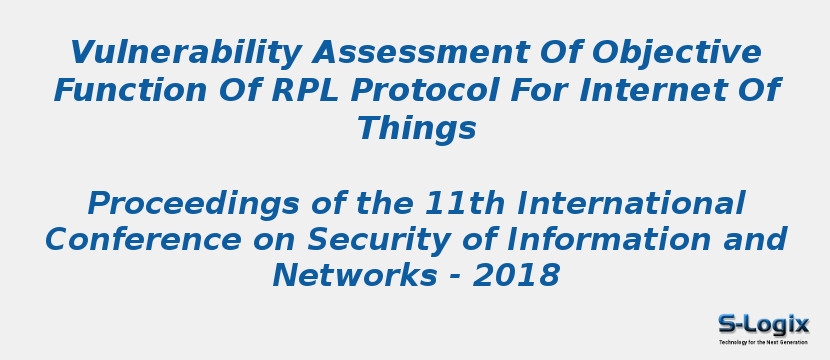Research Area: Internet of Things
The Internet of Things (IoT) can be described as the ever-growing global network of objects with built-in sensing and communication interfaces such as sensors, Global Positioning devices (GPS) and Local Area Network (LAN) interfaces. Security is by far one of the biggest challenges in IoT networks. This includes secure routing which involves the secure creation of traffic routes and secure transmission of routed packets from a source to a destination. The Routing Protocol for Low-power and Lossy network (RPL) is one of the popular IoTs routing protocol that supports IPv6 communication. However, it suffers from having a basic system for supporting secure routing procedure which makes the RPL vulnerable to many attacks. This includes rank attack manipulation. Objective Function (OF) is one of the extreme importance features of RPL which influences an IoT network in terms of routing strategies as well as network topology. However, current literature lacks study of vulnerability analysis of OFs. Therefore, this paper aims to investigate the vulnerability assessment of OF of RPL protocol. For this, we focus on the rank attack manipulation and two popular OFs: Objective Function Zero (OF0) and the Minimum Rank with Hysteresis Objective Function (MRHOF).
Keywords:
Author(s) Name: Felisberto Semedo , Naghmeh Moradpoor and Majid Rafiq
Journal name: Proceedings of the 11th International Conference on Security of Information and Networks
Conferrence name:
Publisher name: ACM
DOI: 10.1145/3264437.3264438
Volume Information: September 2018 ,Article No: 1,Pages 1–6
